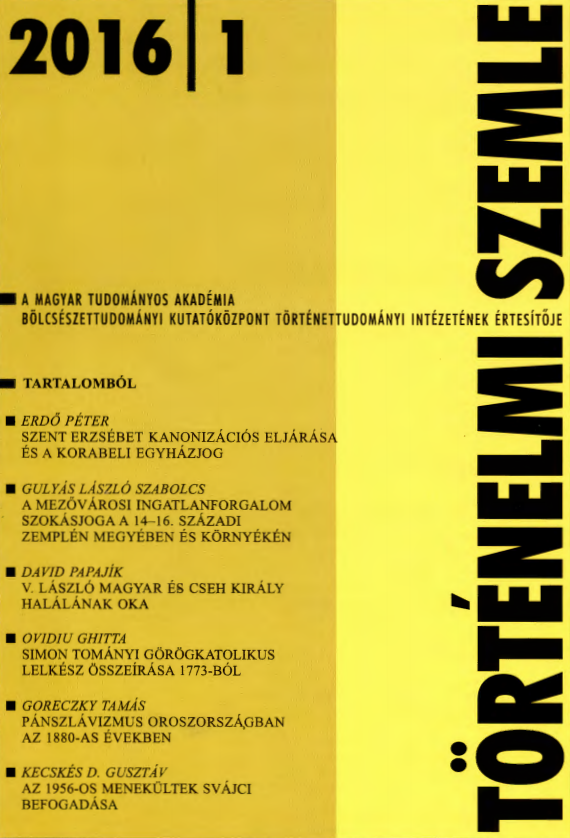Egy szabálytalan összeírás tanulságai - Simon tományi görögkatolikus lelkész összeírása 1773-ból
The Lessons of an Extraordinary Conscription. The Census Record of Şimon, Greek-Catholic Priest of Tomány, from 1773
Author(s): Ghitta OvidiuSubject(s): Christian Theology and Religion, Social history, Demography and human biology, 18th Century
Published by: Magyar Tudományos Akadémia Bölcsészettudományi Kutatóközpont Történettudományi Intézet
Keywords: census record of Şimon; Greek-Catholic Priest of Tomány; 1773; history; “non-noble” population;
Summary/Abstract: This study focuses on a census record written in the Romanian language in 1773 by Şimon, a Greek-Catholic priest from the village of Tomány/Tămaia (Szatmár County). Before analyzing the information in the document, the study presents the steps taken by the government of Habsburg Hungary in order to set into motion the bureaucratic mechanism underlying the census of the “non-noble” population in the kingdom. The analysis highlights the pressure exerted from 1768 on by the central authorities over the counties, those administrative units in which the census was to be carried out. Once triggered, the process of gathering information and placing it in standardized forms fell upon the shoulders of the local authorities (secular and ecclesiastical). The census record compiled by the priest Şimon – constantly compared in the article with the census records drawn up by the parish priests from the neighboring villages – contains information about certain demographic aspects (the number of the inhabitants, their distribution by sex, the number of those baptized, married and deceased throughout the year, the existing social categories). However, what distinguishes this from other census records compiled by the Romanian priests in the area is the fact that both the names and the surnames of family heads and their wives are registered here. This document lends itself thus to a detailed analysis of the proper names used in the village. Having become, willy-nilly, part of the mechanism for the collection of the data required by the court in Vienna, this Greek-Catholic priest indulged in small exceptions from the rules of this vast statistical undertaking. His document exceeds therefore the canonical boundaries, providing a comprehensive picture about the community he shepherded.
Journal: Történelmi Szemle
- Issue Year: 2016
- Issue No: 01
- Page Range: 127-148
- Page Count: 22
- Language: Hungarian

